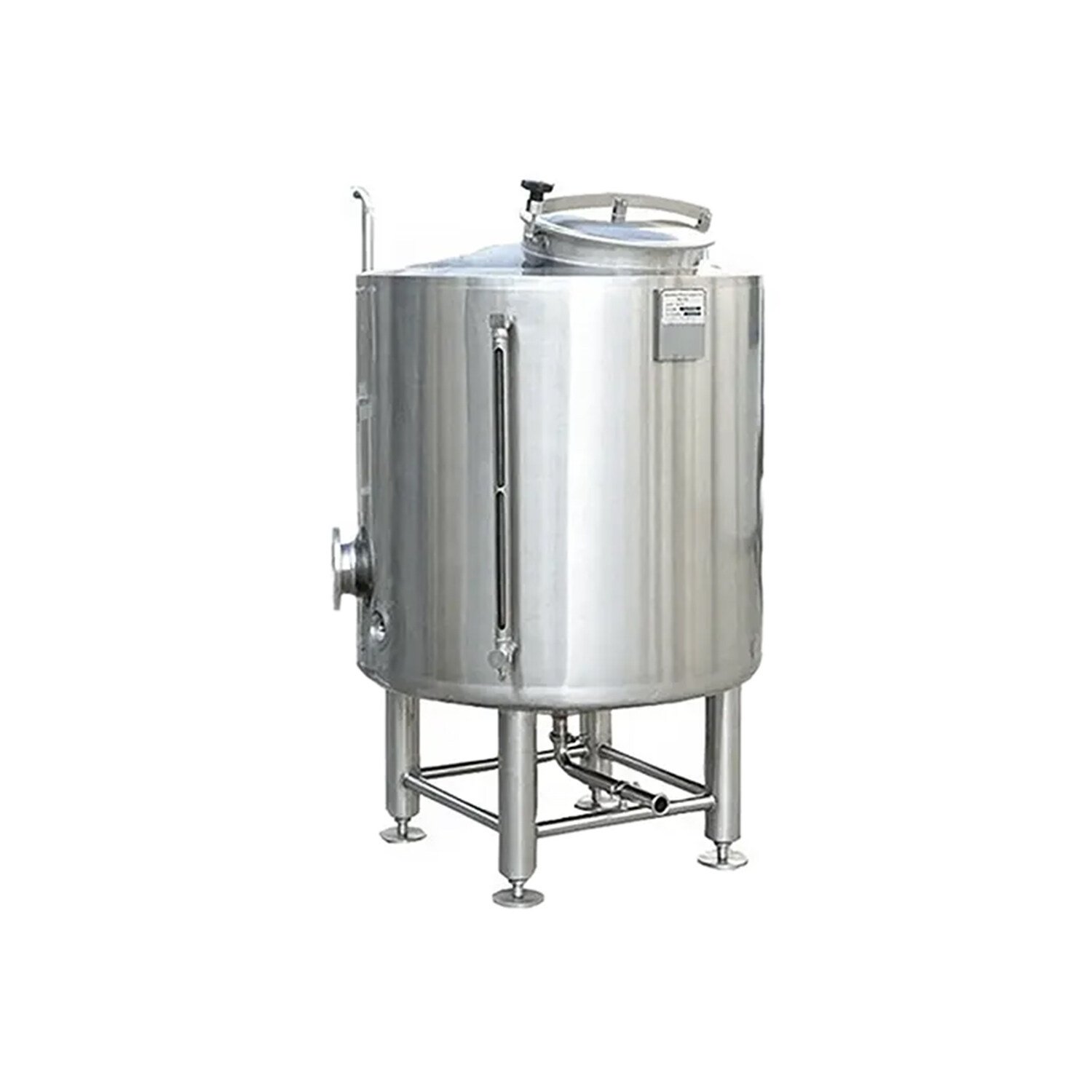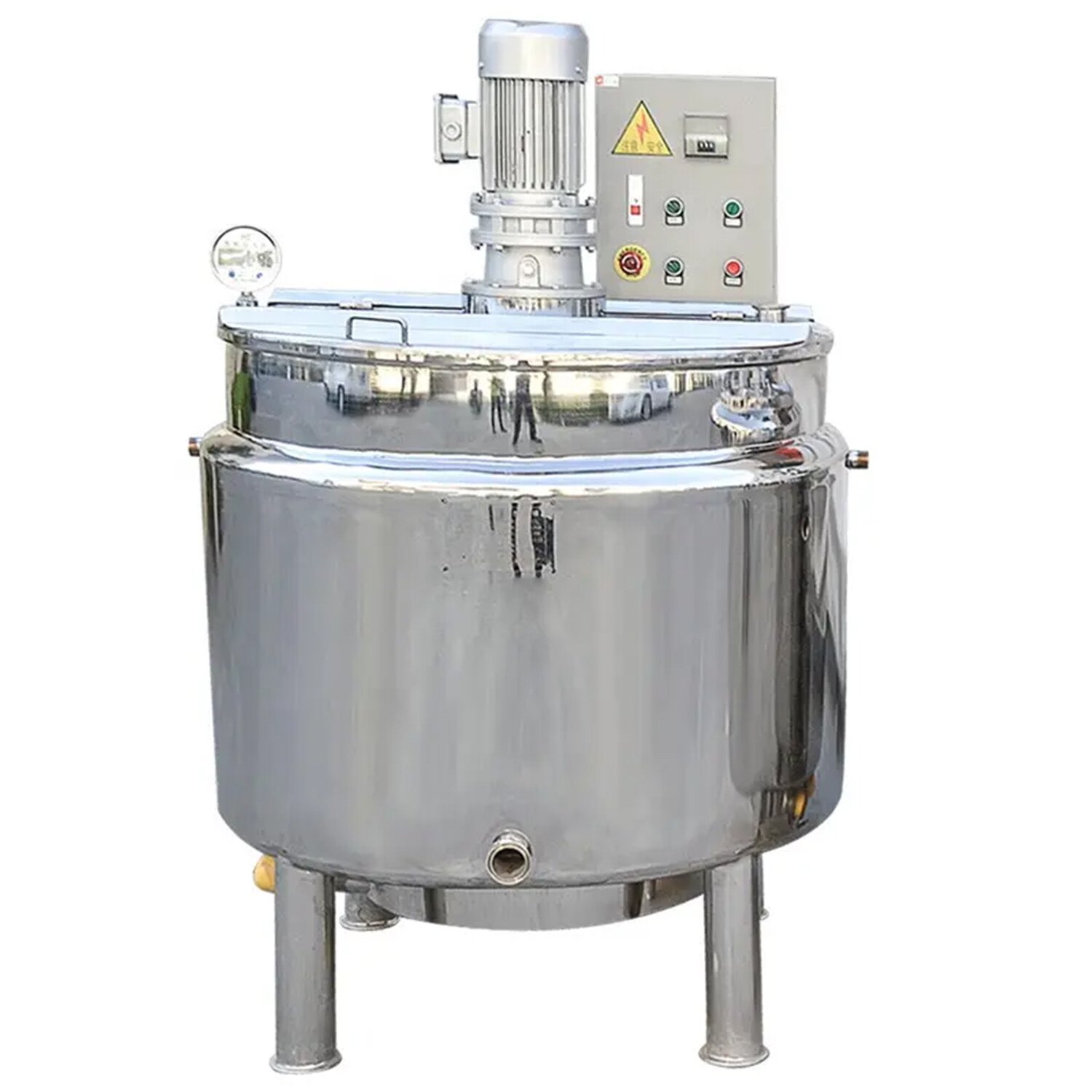Email format error
Email cannot be empty
Email already exists
6-20 characters(letters plus numbers only)
The password is inconsistent
Email format error
Email cannot be empty
Email does not exist
6-20 characters(letters plus numbers only)
The password is inconsistent


Stainless steel mixing tanks with agitators have emerged as indispensable assets in various industries, reshaping the landscape of industrial mixing processes. These robust vessels, characterized by their durability, versatility, and hygienic design, play a pivotal role in blending, emulsifying, and homogenizing a wide range of liquids and solids. From pharmaceuticals to food and beverage production, the applications of these tanks are diverse and far-reaching. This comprehensive exploration delves into the intricacies of stainless steel mixing tanks with agitators, uncovering their anatomy, applications, key features, and considerations for selecting the optimal solution.
1. Understanding the Anatomy of Stainless Steel Mixing Tanks with Agitators
At the core of stainless steel mixing tanks with agitators lies a design meticulously crafted for performance and longevity. The tank body, typically constructed from high-quality stainless steel alloys such as 316 or 304 grade, boasts exceptional corrosion resistance and cleanliness. This ensures product integrity and facilitates compliance with stringent industry regulations. Complementing the tank body is the agitator assembly, comprising a shaft, blades, and drive mechanisms. These components work in tandem to impart rotational motion to the contents, promoting thorough mixing, dispersion, and reaction kinetics.
2. Versatile Applications Across Industries
a. Pharmaceuticals: In pharmaceutical manufacturing, precision is paramount. Stainless steel mixing tanks with agitators enable pharmaceutical companies to achieve uniform distribution of active ingredients, excipients, and solvents. The hygienic design of these tanks minimizes contamination risks, ensuring product purity and regulatory compliance.
b. Food and Beverage: From dairy processing to beverage formulation, stainless steel mixing tanks with agitators are instrumental in creating emulsions, suspensions, and blends. Whether mixing ingredients for sauces, soups, or beverages, these tanks uphold stringent hygiene standards and deliver consistent product quality.
c. Cosmetics: The cosmetics industry relies on stainless steel mixing tanks for the production of creams, lotions, and serums. The smooth, non-reactive surface of stainless steel prevents product contamination and simplifies cleaning procedures, aligning with the industry's emphasis on product safety and consumer satisfaction.
3. Key Features Driving Efficiency
a. Customizable Agitation Systems: Agitator designs are tailored to suit specific mixing requirements, ranging from high-shear dispersion to gentle blending. Customization options include variable speed drives, multiple impeller configurations, and baffles for optimizing fluid dynamics and minimizing mixing times.
b. Sanitary Design and Cleanability: Hygienic design features, such as crevice-free welds, polished surfaces, and sloped bottoms, facilitate thorough cleaning and sterilization. This is critical for industries where cleanliness is paramount, such as pharmaceuticals and food processing.
c. Temperature and Pressure Control: Advanced mixing tanks may incorporate temperature control jackets or heating/cooling coils to maintain precise process temperatures. Pressure-rated vessels enable the handling of pressurized or vacuum conditions, expanding the range of applications for these versatile tanks.
4. Selecting the Right Stainless Steel Mixing Tank with Agitator
a. Capacity and Scale: Assess the volume requirements of your process and select a tank size that balances capacity with operational efficiency. Modular designs or multiple smaller tanks may offer greater flexibility for accommodating fluctuating production demands.
b. Material Compatibility: Consider the chemical compatibility of your process fluids with stainless steel alloys to ensure product integrity and corrosion resistance. Consult with the tank manufacturer to determine the appropriate material grade and surface finish for your application.
c. Agitation Intensity and Speed: Evaluate the rheological properties of your formulation and select an agitator configuration that delivers the desired mixing intensity without causing shear-induced degradation or air entrainment. Variable speed controls enable precise adjustment of mixing parameters to achieve optimal results.
5. Case Studies: Real-World Success Stories
a. Optimizing Production Efficiency in Pharmaceutical Manufacturing: By investing in stainless steel mixing tanks with customized agitation systems, a pharmaceutical manufacturer achieved significant reductions in mixing times and improved batch consistency. The cleanability and hygienic design features of the tanks contributed to streamlined operations and regulatory compliance.
b. Enhancing Product Quality in Food Processing: A food manufacturer upgraded their mixing equipment to stainless steel tanks with sanitary agitators, resulting in improved product homogeneity and shelf stability. The enhanced cleanability and corrosion resistance of the tanks minimized contamination risks and downtime associated with cleaning, leading to increased production output and customer satisfaction.
6. Future Trends and Innovations
a. Integration of Automation and IoT: The integration of automation technologies and Internet of Things (IoT) sensors enables real-time monitoring of mixing parameters and predictive maintenance scheduling. Smart algorithms optimize agitation profiles based on process feedback, maximizing efficiency and reducing energy consumption.
b. Advancements in Material Science: Ongoing research into novel stainless steel alloys and surface treatments aims to enhance corrosion resistance, wear resistance, and thermal conductivity. These advancements will expand the range of applications for stainless steel mixing tanks and prolong their service life in demanding operating environments.
Conclusion: Maximizing Efficiency and Quality with Stainless Steel Mixing Tanks with Agitators
In conclusion, stainless steel mixing tanks with agitators represent a pinnacle of engineering excellence, offering unparalleled performance and reliability across diverse industrial applications. By leveraging customizable designs, hygienic construction, and advanced agitation systems, businesses can optimize their mixing processes, enhance product quality, and uphold stringent regulatory standards. As industries continue to evolve, stainless steel mixing tanks with agitators will remain indispensable assets, driving efficiency, innovation, and sustainable growth.